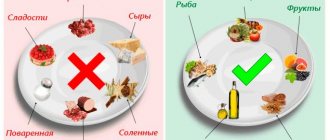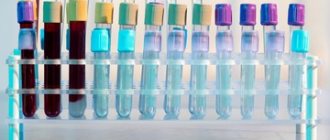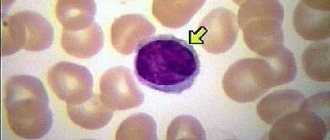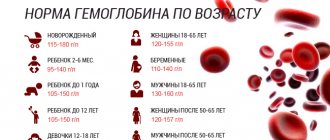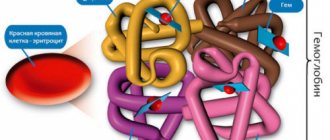In many cases, a sharp drop in platelet levels in the blood directly indicates severe infectious diseases. For example, malaria and Dengue fever lead to such consequences. A similar thing happens with diseases of the endocrine system, for example, with diabetes.
What are the dangers of low platelets?
Firstly, when they decrease, the rate of blood clotting also decreases, so even minor bleeding can cause asphyxia (due to blood loss).
Secondly, a low platelet count makes the blood too thin, disrupting the balance of other formed elements. With a long-term condition, the risk of developing chronic diseases of the cardiovascular system increases significantly.
How can you increase your platelet levels? Recent studies confirm that this can be achieved by following a special diet.
Symptoms of low platelet levels
A condition in which the level of platelets in the body decreases is called thrombocytopenia. It is provoked by bad habits and poor nutrition. The pathology is dangerous because it disrupts all parts of homeostasis, which is accompanied by excessive bleeding.
The deviation is regulated with the help of medications and a special diet. The second method is more preferable, since medications have a systemic effect on the entire body.
The most pronounced symptoms of thrombocytopenia include:
- bleeding gums;
- heavy menstruation;
- slow regeneration of the skin;
- causeless appearance of bruises;
- nosebleeds.
Attention! Alcoholic beverages increase the risk of thrombocytopenia.
Norms
To ensure control over hemostasis, standards are provided. The number of platelets in the blood is determined by laboratory tests. The norm for men is 200-400 thousand units/µl, and for women – from 180 to 320 thousand units/µl. During menstruation, the volume of blood cells decreases.
Causes
A sudden decrease in platelets in the blood is a serious reason for a comprehensive examination. Cells can be destroyed by the body’s own or simply not produced in the required quantity. In some cases, a decrease in the indicator indicates a malfunction of the spleen. Possible causes of the pathological process include the following:
- vitamin B12 deficiency;
- heavy metal poisoning;
- infectious diseases (chickenpox, HIV, hepatitis C, etc.);
- autoimmune diseases;
- toxic poisoning;
- blood cancer;
- Werlhof's disease;
- taking medications that affect blood clotting.
What foods increase platelets in the blood?
Homeostasis can be normalized by introducing foods that increase platelets into the diet. These include sources of minerals. It is equally important to restore the water-salt balance by controlling the amount of fluid consumed. You should also include foods containing vitamin K in your diet. The main advantage of the diet over drug therapy is its harmlessness. The necessary substances enter the body in natural form. They are perfectly absorbed without causing side symptoms.
To improve the quality of blood cells, you need to make your diet varied
Dairy products that increase platelets
Regular consumption of dairy products can increase calcium levels in the body. Since their digestibility decreases with age, it is necessary to give preference to specimens with a low lactose content. Dairy products to increase platelets include:
- hard cheeses;
- cottage cheese;
- curdled milk;
- sour cream;
- natural yogurt.
It is important to remember to consume in moderation, since excessive amounts of lactose can cause digestive upset.
Meat products that increase blood platelets
If you have thrombocytopenia, you should definitely add meat to your diet. Beef liver is especially beneficial in this case. It contains a large amount of iron, which has a positive effect on hemoglobin.
The meat of animals raised on a farm is considered the most useful.
Seafood
You can also increase platelet levels with seafood. Particular attention should be paid to cod fish. It not only regulates platelet levels, but also saturates the body with protein.
It is equally important to eat seaweed and mussels
Cereals
Products for raising platelets include buckwheat. It is famous for its rich content of iron, calcium and vitamins. In addition, buckwheat effectively cleanses the body of toxic substances and increases the supply of platelets. Experts recommend eating green buckwheat, as it contains more nutrients.
You should add millet, oatmeal and rice to your diet
Fruits and vegetables, herbs
To replenish the supply of vitamins and minerals during thrombocytopenia, fruits should be included in the diet. It is especially useful to eat kiwi. It is considered the richest source of vitamins B and C. Kiwi not only regulates the composition of blood fluid, but also strengthens the immune system.
We recommend reading: Kiwi: beneficial properties and contraindications
Pitahaya and papaya leaves have similar properties. Their only drawback is the difficulty of acquiring them. Berries that increase platelet levels include:
- strawberries;
- black currant;
- gooseberry;
- blackberries;
- strawberries
To increase platelet levels, you should consider adding greens and vegetables to your diet
Fiber speeds up the process of digestion of protein foods, and vitamins maintain blood composition. To improve your well-being with thrombocytopenia, you should consume:
- carrot;
- dill;
- celery;
- spinach;
- bell pepper;
- parsley
We recommend reading: Celery: beneficial properties and contraindications
Dried fruits
Instead of fatty and high-calorie desserts, experts recommend eating dried fruits. They not only reduce the need for sweets, but also replenish the supply of microelements. The most useful dried fruits that increase platelet levels include dried apricots and prunes. Their benefits are due to their rich iron content.
Due to their high calorie content, dried fruits should be consumed in limited quantities.
How to raise platelets in the blood with foods
Foods that need to be eaten with low platelets are introduced into the diet gradually. It is important to consume them in moderation, since an excess of nutrients is just as harmful as their deficiency. When preparing your diet, you need to ensure it is balanced. It must contain protein foods and vegetables that promote its digestibility. When choosing products in a store, you need to pay attention to their freshness.
Comment! The fastest way to restore platelet levels is considered to be a blood transfusion.
For men
In men, a decrease in platelets in the blood is often explained by the formation of blood clots. Therefore, the preparation of a diet must be treated with special responsibility. It is extremely important to include meat, eggs and vegetables in your diet. Protein foods that increase platelets will speed up the process of building muscle mass and help you recover from heavy physical activity.
For women
In women, platelet levels may fluctuate throughout the menstrual cycle. During critical days, the need for nutrients increases. Therefore, it is extremely important to know which foods are most preferable for low platelets. During this period, you need to eat more buckwheat porridge, beef liver, eggs and kiwi. This will improve your well-being and prevent unwanted complications.
For pregnant
During pregnancy, the number of platelets in the blood decreases naturally. In addition, a woman’s body should receive vitamins and minerals, since the baby’s development depends on this. Foods that increase platelets in the blood during pregnancy include carrots, liver, bell peppers, eggs, red berries and greens. Dairy products should be consumed in moderation as they can cause bowel problems.
For children
Products that increase platelets in the blood of children are introduced into the diet after consultation with a pediatrician. It is important to exclude the presence of an allergic reaction. A child's diet must include dairy products, protein foods, vegetables and fruits. It is advisable to limit the consumption of flour products and various semi-finished products.
Important! If thrombocytopenia occurs, you should avoid foods high in carbohydrates and fats.
Medications
In cases where a diet that increases platelets is not enough, medications are prescribed. These include hemostatic and hormonal agents. If thrombocytopenia is mild, vitamin therapy is performed.
Prednisolone
Taking Prednisolone is indicated for a decrease in platelets due to oncological processes. The drug is hormonal in nature. It is taken in short courses due to the high likelihood of side effects.
Prednisolone increases platelets in the short term
Thrombopoietin
Thrombopoietin is the active ingredient in a number of drugs that increase platelet volume. It is taken when the patient has an urgent need to increase platelets. The active substance of the drug directs its action to the genitals, kidneys and bone marrow. This ensures the production of new blood cells.
Thrombopoietin is part of the drug Revolade
Derinat
Derinat contains nucleic acids that are extracted from salmon fish. They have a stimulating effect on bone marrow function. The drug normalizes blood clotting and prevents hemorrhagic disorders in the body. Its advantages include a low likelihood of side effects.
The drug is administered into the body intramuscularly
Codecor
The main feature of the drug is its natural origin. It contains plant extracts that increase the supply of blood cells. Taking it helps to quickly and without complications cope with the manifestations of thrombocytopenia.
Sodecor is released in the form of a tincture
When is spleen removal indicated?
The surgical method - splenectomy (removal of the spleen) - is based on the elimination of the organ that causes increased platelet breakdown. It is used for blood diseases when other treatments are ineffective.
The effectiveness of splenectomy - 60% of patients experience long-term remission
Indications for splenectomy:
- if a full course of hormonal therapy has been completed, but 2 or more exacerbations have already been suffered, the duration of the disease is more than a year;
- if there are contraindications to the use of corticosteroids (hypertension, diabetes mellitus);
- in severe forms of the disease with manifestations of hemorrhage in the brain, retina, facial tissue, tongue.
Vitamins
Vitamins are needed to strengthen the body during treatment. They increase the effectiveness of basic therapy and strengthen the immune system. They can be taken both as part of foods and in the form of vitamin complexes.
Iron
Iron is directly involved in the process of homeostasis. It must enter the body when platelets are low. Products containing it include:
- buckwheat;
- liver;
- legumes;
- nuts;
- spinach.
Folic acid
Folic acid is also called vitamin B9. It helps to quickly and effectively increase platelet levels in the body. The substance can be found in beets, lettuce, zucchini, apricots and egg yolks.
We recommend reading: Beetroot: beneficial properties and contraindications
Vitamin B12
A lack of vitamin B12 can cause a decrease in platelets. Therefore, it is necessary to add foods containing it to the diet. These include milk, cereals, seafood and beef liver.
Vitamin K
When vitamin K enters the body, it has a stimulating effect on bone marrow function. In case of thrombocytopenia, products containing it help normalize blood composition. These include broccoli, carrots, potatoes and tomatoes.
What not to eat if you have low platelets. Medical certificate of thrombocytopenia
One of the important components of home treatment is diet therapy. There is no special diet developed for patients with thrombocytopenia. In dietetics they are shown a common table. And yet, doctors talk about the need to change eating habits. The diet should contain a sufficient amount of animal and plant proteins. Therefore, a vegetarian diet is excluded for thrombocytopenia.
Severe degrees of the disease cause stomach bleeding. This must be kept in mind when choosing the type of processing and method of cooking. It should be crushed so as not to injure the mucous membranes of the gastrointestinal tract. Hot, cold, spicy, smoked and fatty foods are contraindicated. You will have to give up blood thinners and include foods rich in vitamin B12 and folic acid in your menu.
Meals should be fractional. What you can and cannot eat if you have thrombocytopenia. The diet for thrombocytopenia should be high in calories, and the food should be easily digestible. Freshly squeezed juices from strawberries, wild strawberries, raspberries, cabbage, beets, greens, black radishes, fruits, apples, and bananas are useful. Bleeding gums will be reduced by currants, blackberries and decoctions of their leaves. This diet will prevent anemia that develops with prolonged bleeding. Popularly, medicinal herbs that raise platelet levels are called hemostatic.
Together and separately, they help stop minor hemorrhages and reduce the external manifestations of thrombocytopenia. In addition to the herbs listed, you can brew and drink tea from saffron, blueberries, white mistletoe, knotweed, and walnuts every day.
Any herbal treatment must be agreed upon with the attending physician.
The disease thrombocytopenia is characterized by a decrease in platelet levels. The normal value is per 1 ml of blood. If the readings are below this level, then serious problems with blood clotting can occur, and this is dangerous due to excessive bleeding. Platelets are pieces of large bone marrow cells.
In acute thrombocytopenia, the patient is prescribed bed rest. As soon as the platelet count approaches the lower limit of normal, the patient is recommended to do light exercises and moderate physical activity, long walks, if possible, not in the open sun.
With thrombocytopenia, a full night's sleep of at least 8 hours and a daytime sleep of 1-2 hours is necessary. The cause of platelet destruction may be a viral infection, so contact with people suffering from viral or infectious diseases is excluded. Thrombocytopenia is a disease accompanied by a decrease in the number of platelets in the blood - blood cells responsible for its clotting.
These diseases can be caused by various reasons, be congenital or acquired. Common to all thrombocytopenia is the leading syndrome - bleeding. Bleeding with thrombocytopenia occurs spontaneously or after minimal damage and can last up to several days. Thrombocytopenia is also characterized by the appearance of small hemorrhages on the skin and mucous membranes - petechiae, and larger ones - ecchymosis, commonly known as bruises. The most common cause of thrombocytopenia is immune disorders.
Children usually experience pathological immune reactions when the body comes into contact with external factors - viruses, bacteria, drugs. In adults, autoimmune variants predominate, when immune mechanisms are directed against the body's own cells.
Folk remedies
You can increase platelets not only with food, but also with folk remedies. They can be an excellent alternative to medications. Their main feature is the low likelihood of side effects.
Sesame oil
Sesame oil not only effectively increases platelets, but also has a positive effect on the entire composition of the blood system. It is taken 1 tbsp. l. half an hour before meals. Reception is carried out 1 time per day, in the morning. The duration of therapy is determined individually.
Unrefined, cold-pressed sesame oil is considered the most beneficial.
Nettle
Herbs that increase the volume of essential blood cells include nettle. It is taken in two variations - in the form of juice and decoction. The juice is mixed with milk in a ratio of 1:5. The resulting mixture is taken three times a day, 50 ml. If you are lactose intolerant, replace milk with boiled water. Nettle decoction is taken 120 ml in the morning. Treatment is carried out for at least 3 weeks.
Nettle decoction has a hemostatic effect
Advice! After the treatment course, it is necessary to donate blood again.
Chokeberry
Substances present in chokeberry improve the quality of the enzyme composition of the blood. The berry must be eaten in its pure form daily, 50 g. Therapy is carried out for 3 weeks.
Chokeberry contains many acids of organic origin
Treatment of thrombocytopenia
The choice of treatment tactics for thrombocytopenia depends on its origin, type and severity. Conservative methods are used - hormonal therapy, treatment with immunostimulants, plasmapheresis to cleanse the blood of antibodies and their decomposition products.
In case of autoimmune processes of platelet destruction, drugs that suppress the immune system are prescribed. Treatment of thrombocytopenia with folk remedies is used as an additional component. If therapy does not produce results within 4–6 months, surgery is performed to remove the spleen.


